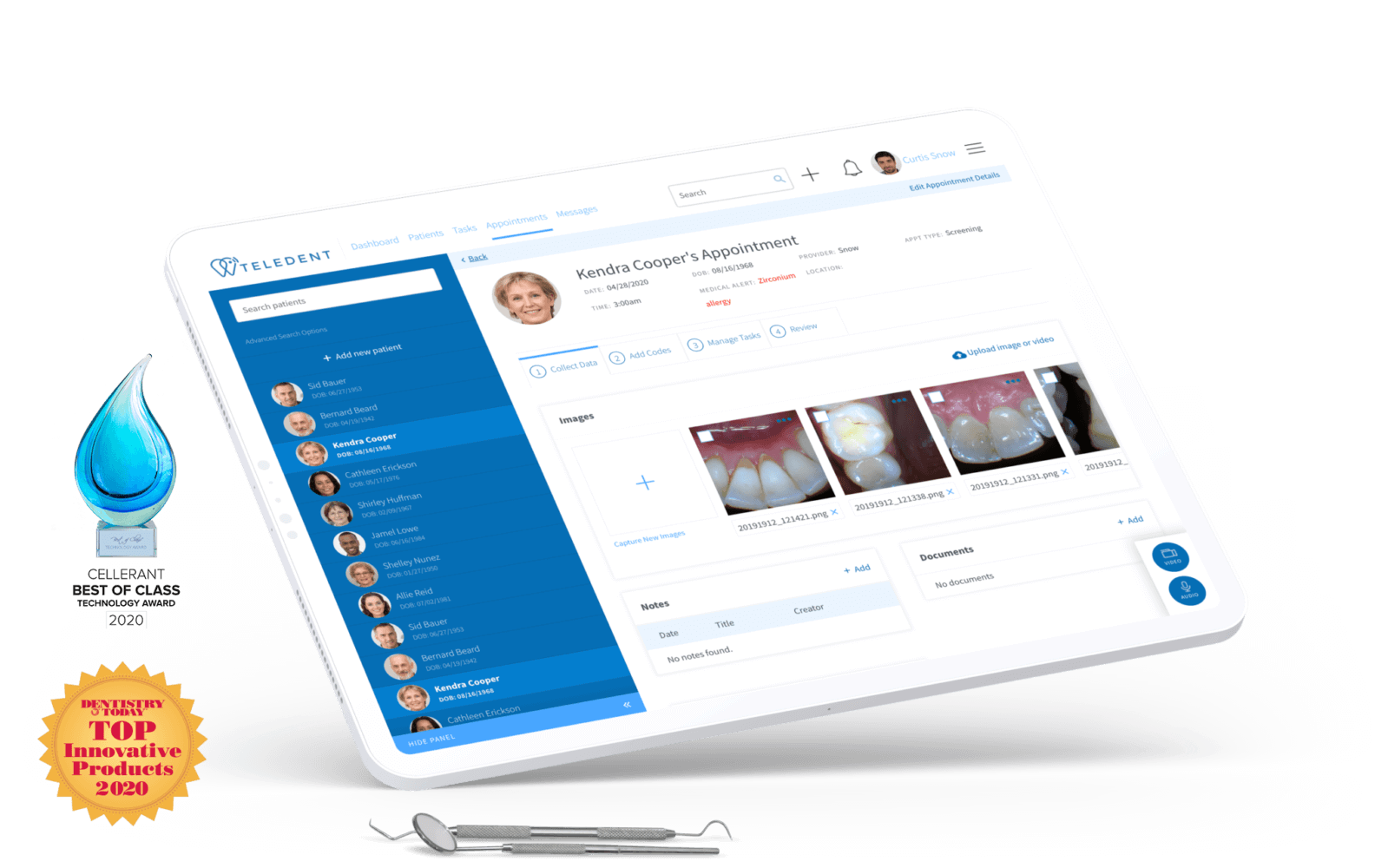
Teledentistry is not paid for by insurance, right? Wrong. Encounters such as periodic evaluations or limited evaluations provided in a teledentistry setting are being compensated through dental insurance.
With the rapid adoption and popularity of telehealth during the pandemic, teledentistry as a care modality has been more recognized by payers. The way forward for dental care telehealth reimbursements was paved by the 2017 ADA adoption of two CDT Codes for teledentistry: synchronous (D9995) for real-time teledentistry encounters and asynchronous (D9996) or “store-and-forward”.
In the examples below, teledentistry is the mode or setting of the care delivered. The D9995 or D9996 code represents whether that mode is real-time (synchronous) or store and forward (asynchronous). The evaluations, whether periodic or limited, is the treatment provided — it’s what is billed. Teledentistry is not a stand-alone CDT code. It is always used in conjunction with another treatment code.
Here are some examples to take the mystery out of coding for teledentistry, and what this can look like in practice with TeleDent.
Synchronous Teledentistry: D9995
Your patient calls on a Saturday morning with a broken tooth, and she is concerned about whether or not she needs to be seen immediately. What are the options? 1. Tell her to wait? Or 2, tell her to meet at the dental office?
There is an alternative: a quick live video call or “synchronous teledentistry” to determine whether the tooth has a large fractured portion requiring a crown or extraction, or whether it’s a small chip that can be easily smoothed or repaired. This would be a standard D0140 Limited Oral Evaluation that you code, plus a CDT D9995 for the synschronous teledentistry encounter.
How does this work concretely? In TeleDent, as an example, this live video appointment happens through a secure patient portal. An existing patient in TeleDent receives a link that takes them securely to video call they can have on their mobile or computer. (New patients have a very simple initial setup.) During the call, you can capture still photos as they display the point of concern to the camera, following your instructions, or share still shots they have taken from their phone. (Photos from phones or the live video feed images can be surprisingly effective. Not all diagnostic work can be done, of course, but even when more imaging is needed, you now know they need to come in.) The communication is bi-directional also — you can send documents to the patient via the patient portal, including treatment plans.
The D9995 code is also going to be used for post-operative visits. During the online video appointment, either from patients sharing files or the capture of still images using TeleDent from the video feed, clinical images can be captured for the patient record. In this type of scenario, some offices charge for a post-operative visit and others do not. Either way you should use CDT code D9995 to document the encounter, and a procedure code, especially if you are seeking reimbursement.
Asynchronous Teledentistry: D9996
Scenario: The dentist is out of the office but hygienists are seeing patients. With teledentistry, hygienists are able to capture images and relevant documentation for periodic evaluations and the dentist is able to review this clinical data when back in the office (or from anywhere!) via batch asynchronous evaluation. If the office has TeleDent, the dentist can followup by securely messaging the patient their findings and recommendations, attaching images and treatment plans. The dentist will then be able to utilize the asynchronous code (D9996) in addition to the periodic oral evaluation code.
+ Teledentistry Referrals, as easy as a drop down menu
Did you know general dentists can refer a patient through teledentistry? Like the two modes above, it can take different forms. A dentist could use TeleDent to start a live video meet and greet with a remote specialist while the patient is still in the chair. If scheduling doesn’t allow that synchronous use of teledentistry, the patient and the specialist can be looped into a joint message in the patient portal with the dentist making the introductions and sharing about the case. In TeleDent, by selecting the specialist as the assigned provider, they automatically have access to the patient and clinical data stored in TeleDent: no confusing email chains to share clinical information or physically mailing CDs and DVDs. Referrals and seamless patient coordination as easy as a dropdown menu. Learn more.
